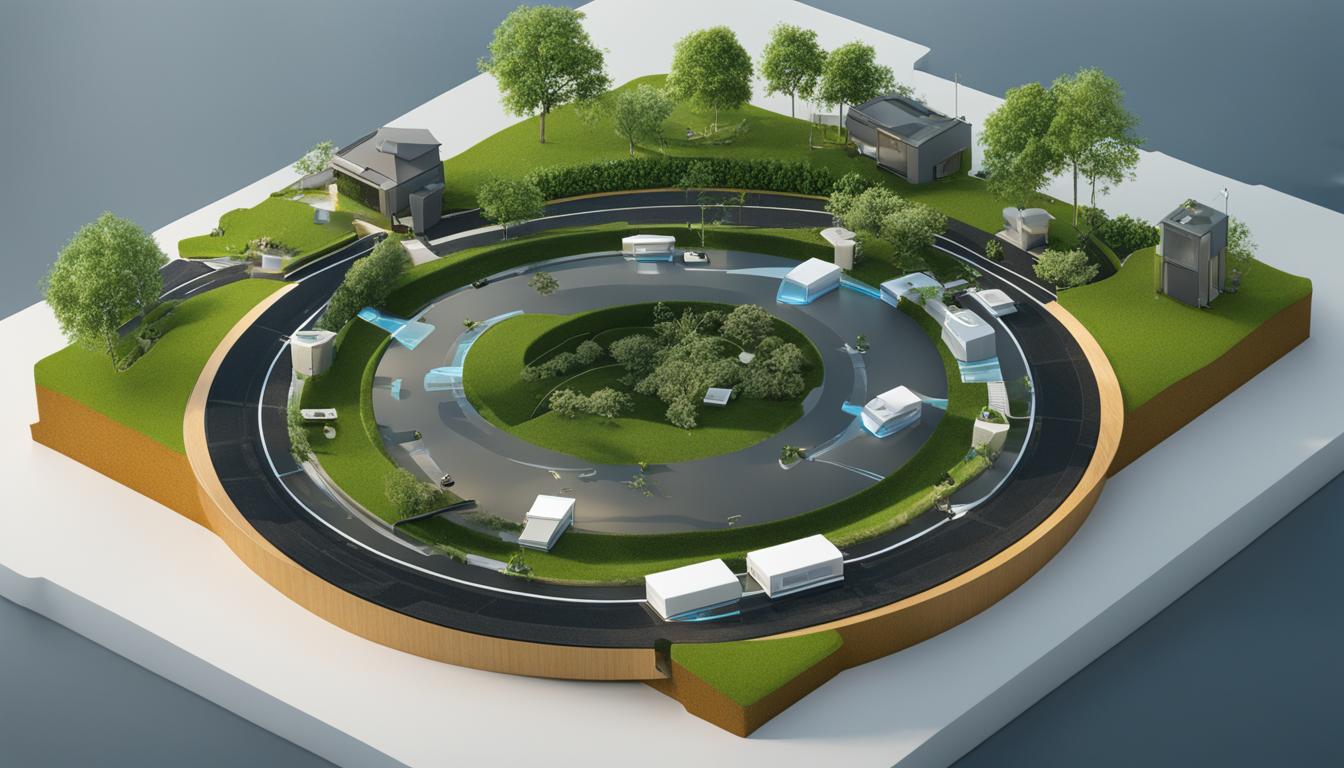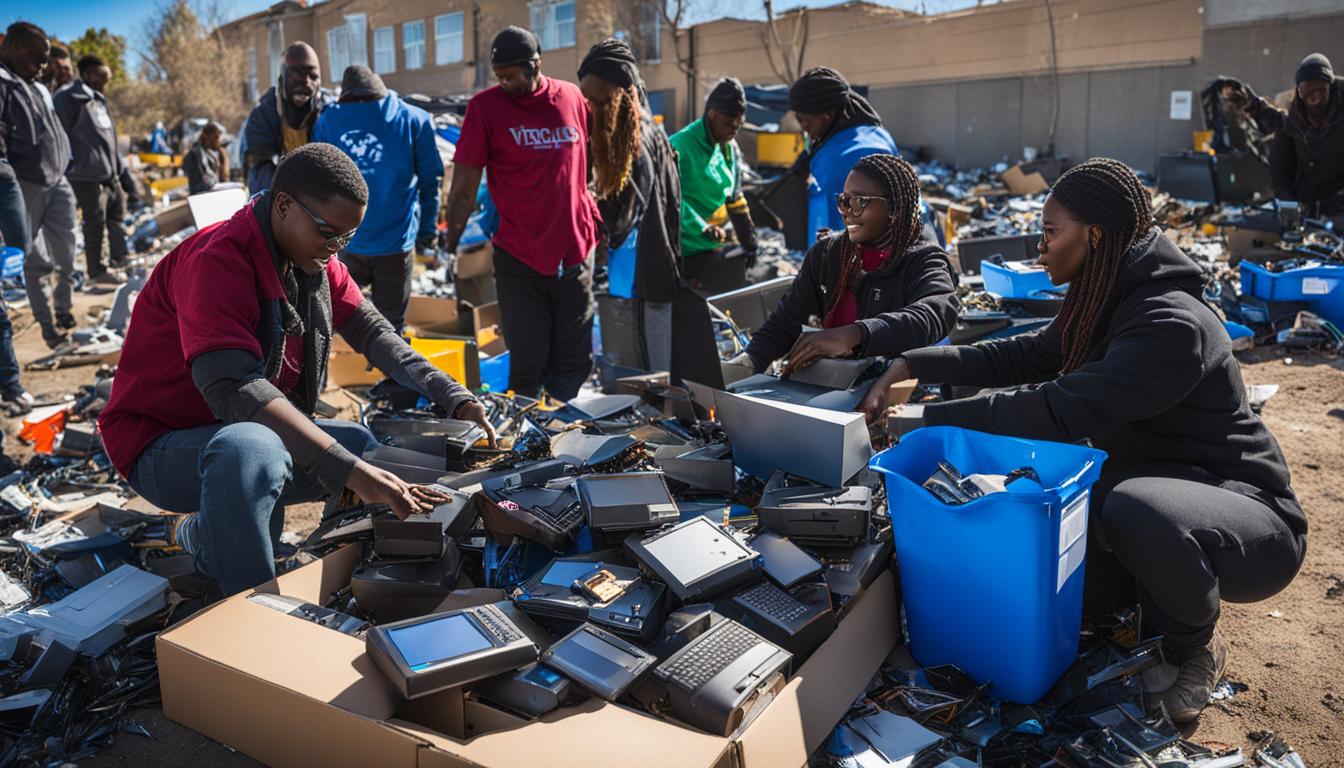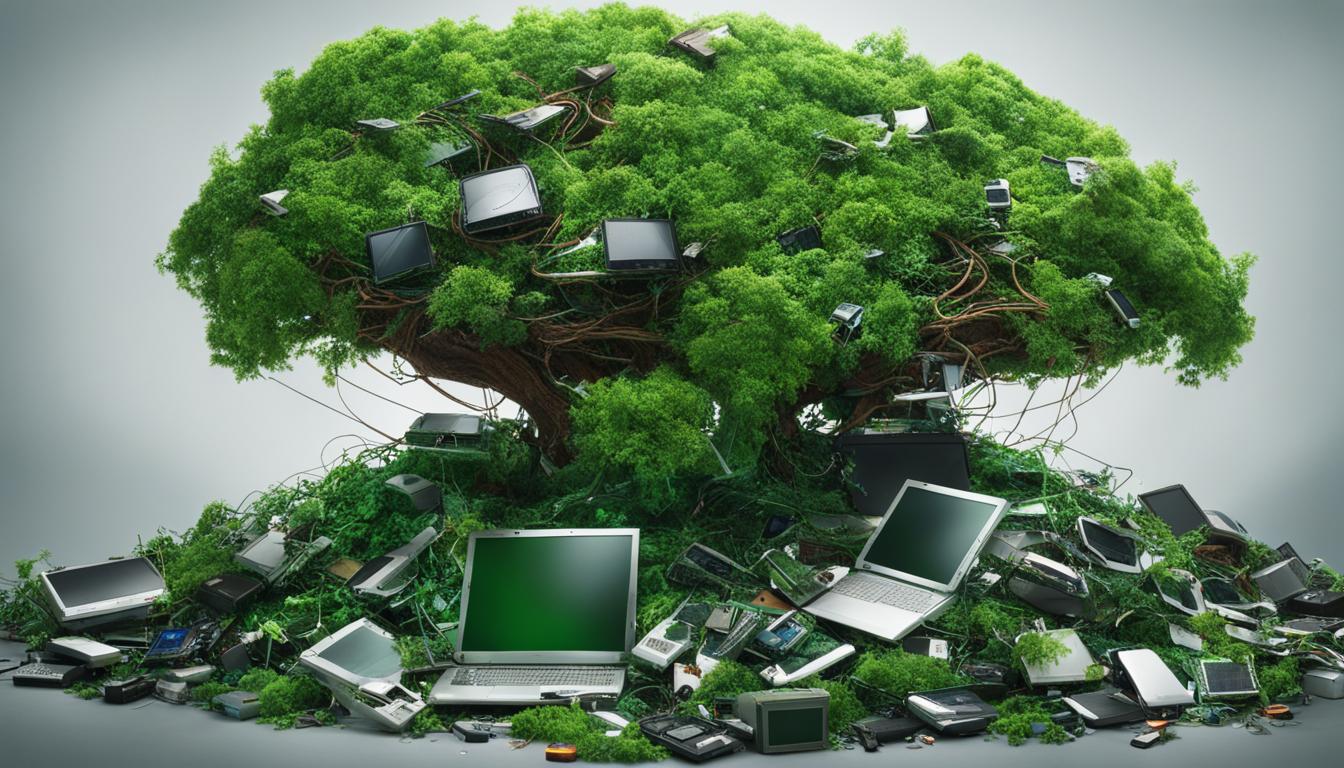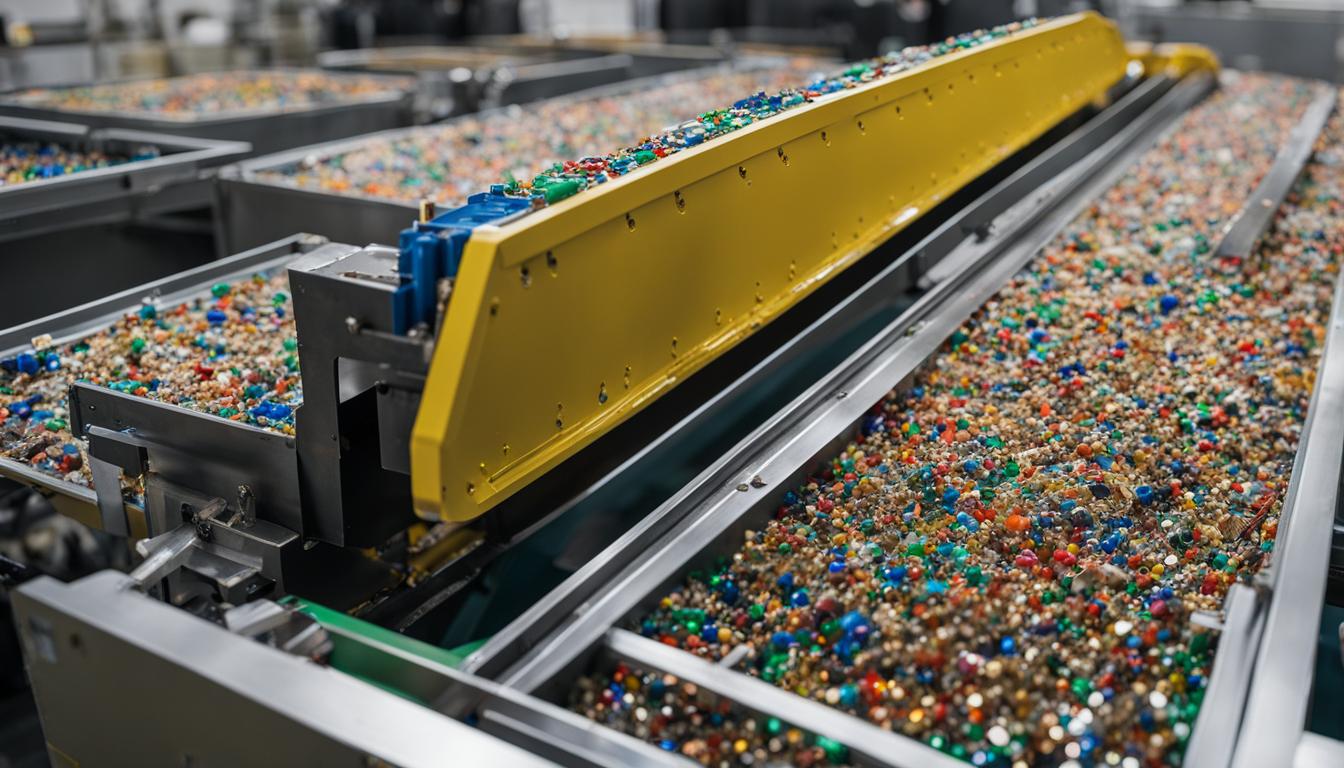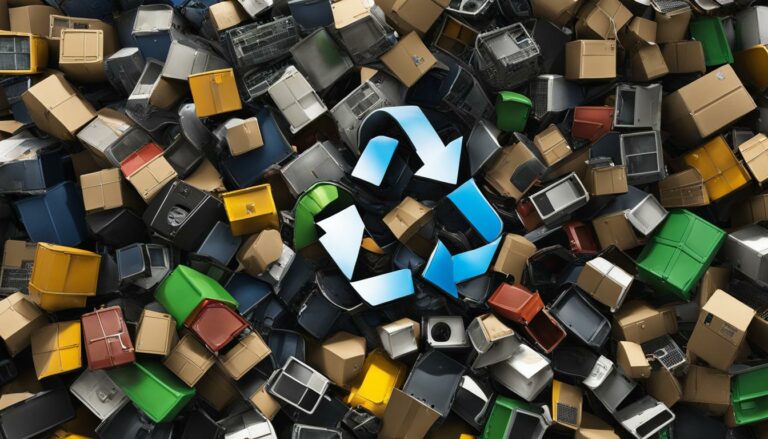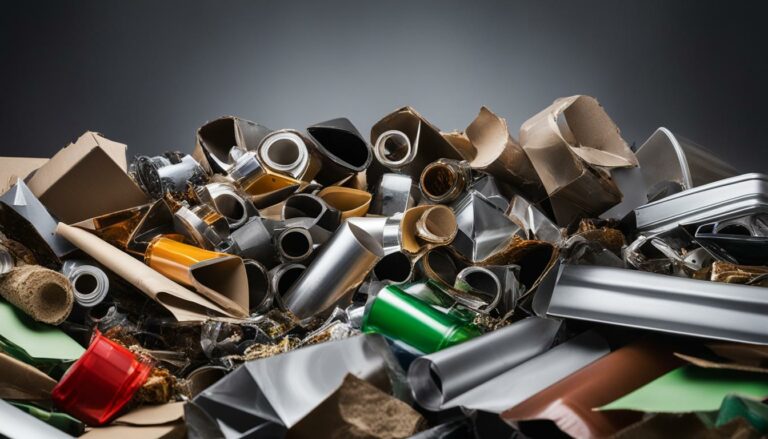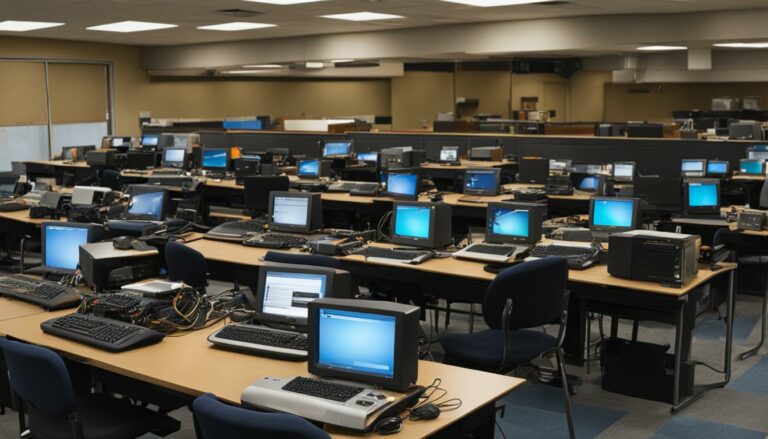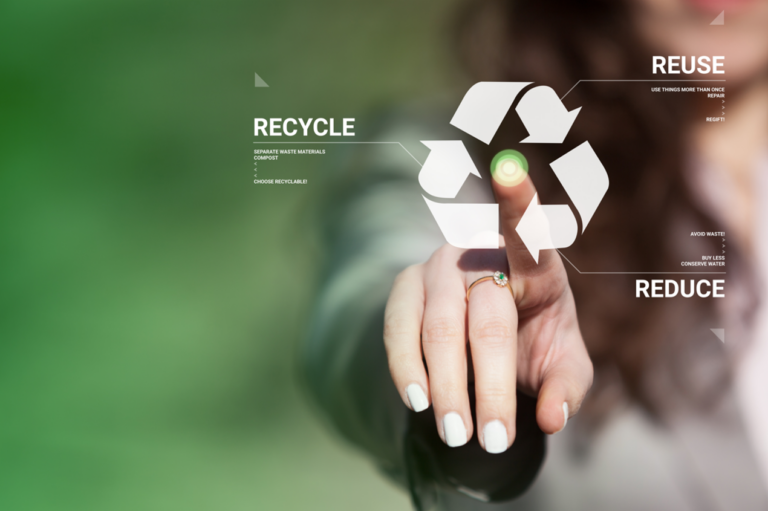IT Recycling: A Win-Win for Environment and Economy
IT recycling has emerged as a win-win solution, benefiting both businesses and the environment. By recycling IT equipment, companies can save costs, reduce their environmental impact, and contribute to the circular economy. Recycling IT equipment helps in reducing electronic waste and conserving valuable resources. It also promotes sustainable IT practices and reduces the carbon footprint associated with IT production. By embracing responsible disposal of IT equipment, businesses can contribute to the UK’s environmental sustainability while boosting the economy.
Key Takeaways
- IT recycling provides cost savings, environmental benefits, and economic advantages for businesses.
- By recycling IT equipment, companies can reduce electronic waste and conserve valuable resources.
- Responsible disposal of IT equipment promotes sustainable practices and reduces the carbon footprint.
- Recycling IT equipment offers energy efficiency and cost savings.
- Engaging in IT recycling presents market opportunities and a competitive edge for businesses.
Environmental Impact of Electronic Waste
The extraction and production of IT equipment can have severe environmental consequences. The energy consumption associated with the manufacturing process contributes to carbon emissions and climate change. Additionally, the extraction of raw materials used in IT equipment, such as rare earth metals and minerals, often leads to deforestation, habitat destruction, and water pollution. These negative impacts on the environment call for sustainable solutions, and e-waste recycling is a crucial component in mitigating the environmental impact of electronic waste.
E-waste recycling plays a significant role in reducing the need for primary extraction and minimizing environmental degradation. By recycling IT equipment, businesses can help conserve valuable resources, including metals like tin, copper, and gold. The reuse and recycling of these materials ensure that they can be used efficiently and prolong the availability of finite resources for future generations. Furthermore, recycling IT equipment also reduces greenhouse gas emissions associated with the production process, contributing to the reduction of the carbon footprint.
“Recycling IT equipment not only saves valuable resources, but it also reduces the pressure on landfills and waste management systems,” says environmental scientist Dr. Sarah Thompson. “It is a sustainable practice that businesses should actively adopt to minimize their environmental impact.”
The Environmental Impact in Numbers
| Environmental Impact | Statistics |
|---|---|
| Energy Consumption | Producing a new computer requires 240 kilograms of fossil fuels and 22 kilograms of chemicals. |
| Greenhouse Gas Emissions | The production of a computer and monitor emits 240 kilograms of carbon dioxide equivalents. |
| Resource Conservation | Recycling one million laptops saves the energy equivalent of electricity used by more than 3,500 UK homes in a year. |
| Water Pollution | Electronics discarded in landfills release toxins, such as lead, mercury, and cadmium, which can contaminate water sources. |
These statistics underscore the urgent need for e-waste recycling and the potential benefits it can bring in terms of reducing the environmental impact of electronic waste. By adopting sustainable practices and promoting responsible IT disposal, businesses can play a vital role in safeguarding the environment and reducing their carbon footprint.
Resource Conservation and Waste Reduction
Responsible disposal of IT equipment plays a crucial role in resource conservation and waste reduction. By recycling IT equipment, businesses can contribute to a more sustainable future by conserving valuable natural resources. One of the key resources conserved through IT recycling is tin, a finite resource used in the production of electronic devices. Recycling IT equipment ensures the efficient use of tin, prolonging its availability for future generations.
In addition to conserving resources, recycling IT equipment also helps minimize the amount of waste generated by industries. By diverting IT equipment from landfills, businesses can reduce the burden on waste management systems and alleviate the pressure on limited landfill space. This not only reduces the environmental impact of waste disposal but also contributes to overall waste reduction.
Moreover, responsible disposal of IT equipment contributes to the reduction of the carbon footprint. The production of new IT equipment requires significant amounts of energy and resources, resulting in greenhouse gas emissions. By recycling IT equipment, businesses can reduce the need for primary extraction and production, leading to a lower carbon footprint. This aligns with sustainability goals and promotes eco-friendly practices.
| Benefits of Responsible Disposal of IT Equipment | Impact |
|---|---|
| Conserves valuable resources | Reduces the need for primary extraction |
| Minimizes waste generation | Alleviates pressure on waste management systems |
| Reduces carbon footprint | Contributes to sustainability goals |
By practicing responsible disposal of IT equipment, businesses can not only contribute to resource conservation and waste reduction but also demonstrate their commitment to sustainable practices. Embracing IT recycling is a crucial step towards a greener and more circular economy, benefiting both the environment and the economy.
Energy Efficiency and Cost Savings
Recycling IT equipment not only benefits the environment but also offers significant energy efficiency and cost savings for businesses. When compared to the production of new equipment, recycling consumes less energy, making it a greener and more sustainable option. The extraction and refining of raw materials for new equipment require substantial amounts of energy, contributing to carbon emissions and environmental degradation. By opting for IT asset recovery and recycling, businesses can reduce their dependence on fossil fuel-derived energy sources and contribute to the overall reduction of carbon footprint.
In addition to energy savings, recycling IT equipment also leads to cost savings for businesses. By extending the lifespan of IT assets through recycling and refurbishment, companies can avoid the need for expensive new purchases. This reduces the procurement costs associated with new equipment, allowing businesses to allocate their budget to other critical areas. Furthermore, recycling IT equipment lowers energy expenses and reduces waste management costs, leading to overall cost reductions for businesses.
Embracing eco-friendly IT solutions through IT asset recovery and recycling not only benefits the environment but also provides long-term cost savings. By reducing energy consumption and minimizing waste generation, businesses can create a more sustainable and efficient operation. With the growing focus on sustainability and environmental responsibility, adopting eco-friendly IT practices can also enhance the reputation and attract environmentally conscious consumers.

Advantages of IT Asset Recovery and Recycling:
- Significant energy savings compared to the production of new equipment.
- Reduction in carbon footprint by reducing energy consumption and greenhouse gas emissions.
- Cost savings through reduced raw material procurement and lower energy expenses.
- Minimization of waste generation, leading to lower waste management costs.
- Opportunity to attract environmentally conscious consumers and gain a competitive edge.
Table: Cost Savings Comparison
| Cost Categories | Traditional IT Procurement | IT Asset Recovery and Recycling |
|---|---|---|
| Equipment Procurement | High costs for new equipment purchases | Lower costs through the reuse and refurbishment of existing assets |
| Energy Expenses | Higher energy consumption for new equipment production | Reduced energy expenses through recycling and extending the lifespan of assets |
| Waste Management | Higher costs for disposal of obsolete equipment | Lower waste management costs by recycling and minimizing waste generation |
By adopting IT asset recovery and recycling, businesses can not only reduce their environmental impact but also achieve significant cost savings. Recycling IT equipment leads to energy efficiency, lower procurement costs, and reduced waste management expenses. It is a win-win solution that not only benefits the bottom line but also contributes to a more sustainable future.
Economic Advantages and Market Opportunities
While IT recycling brings significant environmental benefits, it also presents numerous economic advantages for businesses. One of the key advantages is cost savings. By opting for IT recycling and responsible disposal of equipment, businesses can reduce their raw material procurement costs. Additionally, recycling IT equipment leads to lower energy expenses as the extraction and refining of raw materials require substantial amounts of energy. Moreover, businesses can also save on waste management costs by reducing the amount of waste generated through recycling.
Furthermore, by embracing eco-friendly IT solutions and implementing effective IT waste management strategies, companies can tap into a growing market demand for sustainable products. This provides businesses with a competitive edge and the opportunity to attract environmentally conscious consumers. As sustainability becomes an increasingly important factor in purchasing decisions, businesses engaged in IT recycling can position themselves as leaders in environmental responsibility, gaining the trust and loyalty of customers.
In addition to cost savings and market opportunities, IT recycling also contributes to the overall economic growth. By adopting sustainable practices and promoting the circular economy, businesses help create a market for recycled IT equipment. This not only stimulates the growth of the IT recycling industry but also generates employment opportunities and fosters innovation in eco-friendly technologies.
| Benefits | Summary |
|---|---|
| Cost savings | Reduced raw material procurement, lower energy expenses, and lower waste management costs. |
| Market opportunities | Gaining a competitive edge and attracting environmentally conscious consumers. |
| Economic growth | Stimulating the growth of the IT recycling industry, creating employment opportunities, and fostering eco-friendly technology innovation. |
Conclusion
IT recycling offers numerous benefits for businesses and the environment. By responsibly disposing of IT equipment and promoting sustainable practices, businesses can reduce their environmental impact, manage electronic waste effectively, and contribute to a greener future. Recycling IT equipment not only conserves valuable resources but also helps create a circular economy.
Implementing eco-friendly IT solutions, such as IT recycling, can lead to cost savings for businesses. It reduces the need for raw material procurement, minimizes energy expenses, and lowers waste management costs. Additionally, companies engaged in IT recycling can tap into the growing market demand for sustainable products, gaining a competitive edge and attracting environmentally conscious consumers.
It is crucial for businesses across industries to recognize the potential of IT recycling and take proactive steps towards a more sustainable future. By embracing responsible electronic waste management, businesses can protect the environment, conserve resources, and contribute to a vibrant circular economy. Let us join hands and pave the way for a greener and more sustainable tomorrow.
FAQ
What are the benefits of IT recycling?
IT recycling benefits businesses by saving costs, reducing their environmental impact, and contributing to the circular economy. It also helps in reducing electronic waste, conserving valuable resources, promoting sustainable IT practices, and reducing the carbon footprint associated with IT production.
What is the environmental impact of electronic waste?
The extraction and production of IT equipment can have severe environmental consequences, including energy consumption, deforestation, habitat destruction, and water pollution. By recycling IT equipment, businesses can significantly reduce the need for primary extraction and minimize environmental degradation. Recycling IT equipment also reduces greenhouse gas emissions associated with the production process, contributing to the reduction of carbon footprint.
How does IT recycling help conserve resources and reduce waste?
Recycling IT equipment helps conserve valuable natural resources by ensuring the efficient use of finite resources like tin. It prolongs the availability of resources for future generations and reduces the need for primary extraction. Additionally, recycling IT equipment reduces the amount of waste generated by industries and minimizes the burden on waste management systems. It also alleviates the pressure on landfills, contributing to waste reduction and resource conservation.
Does IT recycling offer energy efficiency and cost savings?
Yes, recycling IT equipment offers significant energy savings compared to the production of new equipment. The extraction and refining of raw materials require substantial amounts of energy, whereas recycling consumes less energy. By opting for IT recycling and asset recovery, businesses can reduce their dependence on fossil fuel-derived energy sources, leading to a greener and more energy-efficient operation. Recycling IT equipment also leads to cost savings through reduced raw material procurement, lower energy expenses, and fewer waste management costs.
Are there any economic advantages and market opportunities in IT recycling?
Besides the environmental benefits, IT recycling presents several economic advantages for businesses. Recycling IT equipment can lead to cost savings through reduced raw material procurement, lower energy expenses, and reduced waste management costs. Additionally, companies engaged in IT recycling can tap into a growing market demand for sustainable products, gaining a competitive edge and attracting environmentally conscious consumers. By implementing effective IT waste management strategies, businesses can benefit both financially and environmentally.
Source Links
- https://medium.com/@metalrecyclingseo/tin-recycling-a-win-win-solution-for-businesses-and-the-environment-4665806d5f25
- https://environment.ec.europa.eu/news/circular-economy-new-recommendations-national-authorities-increase-return-used-and-waste-mobile-2023-10-06_en
- https://www.epw.senate.gov/public/index.cfm/2023/7/chairman-carper-s-opening-statement-hearing-on-electronic-waste-recycling-and-reuse


